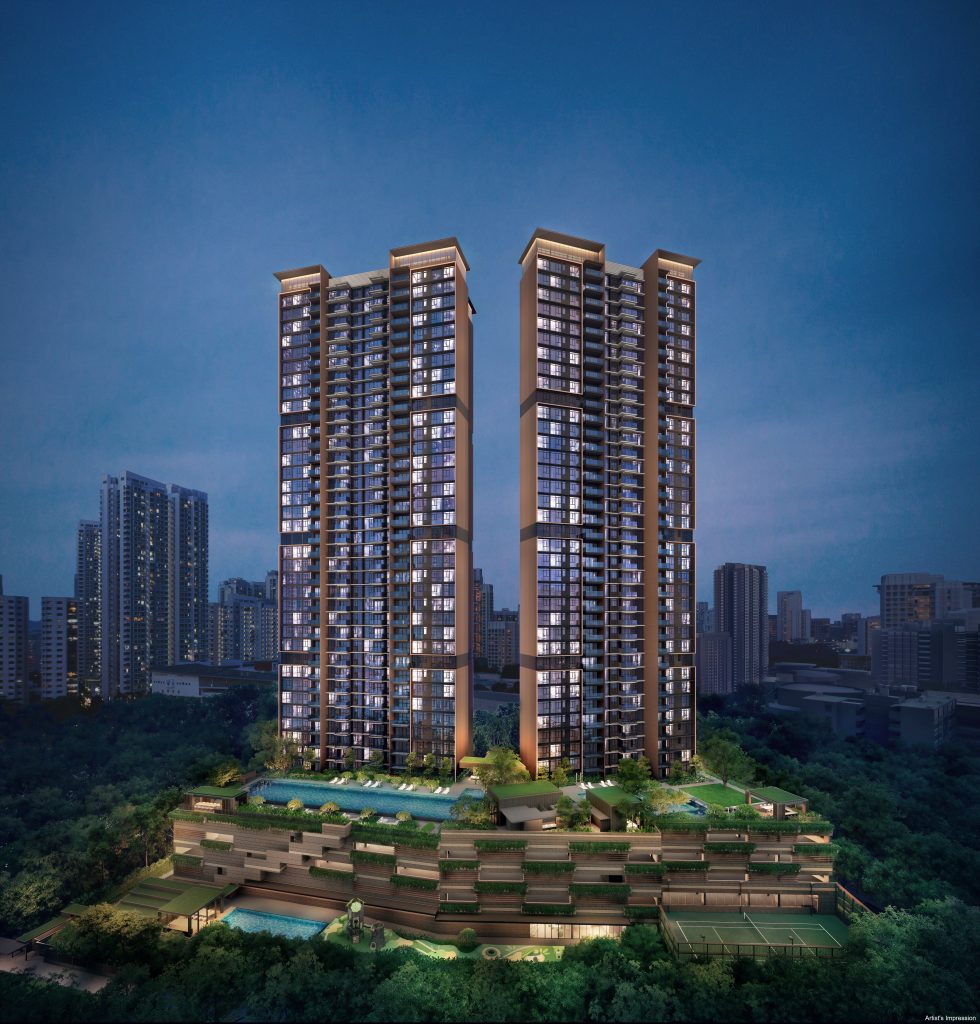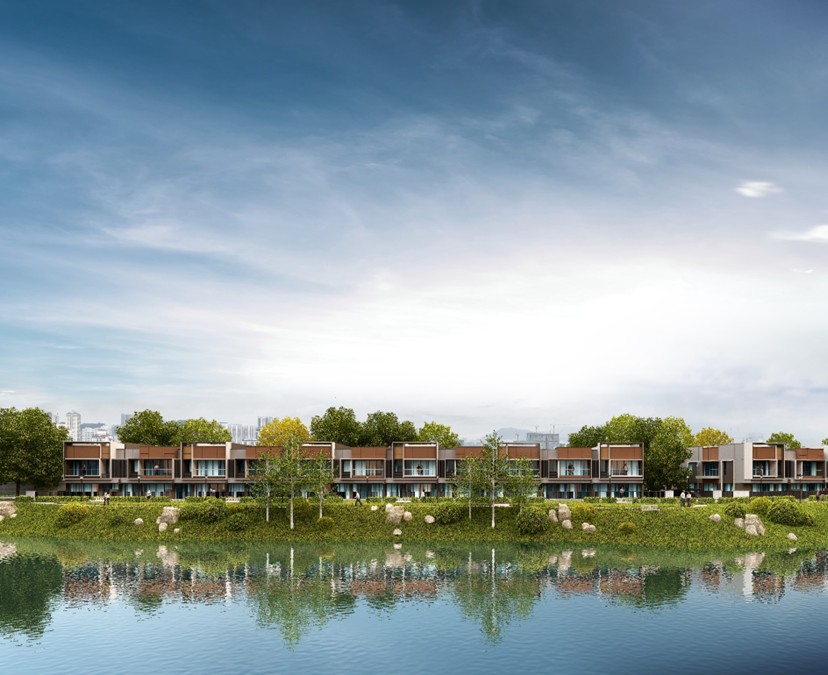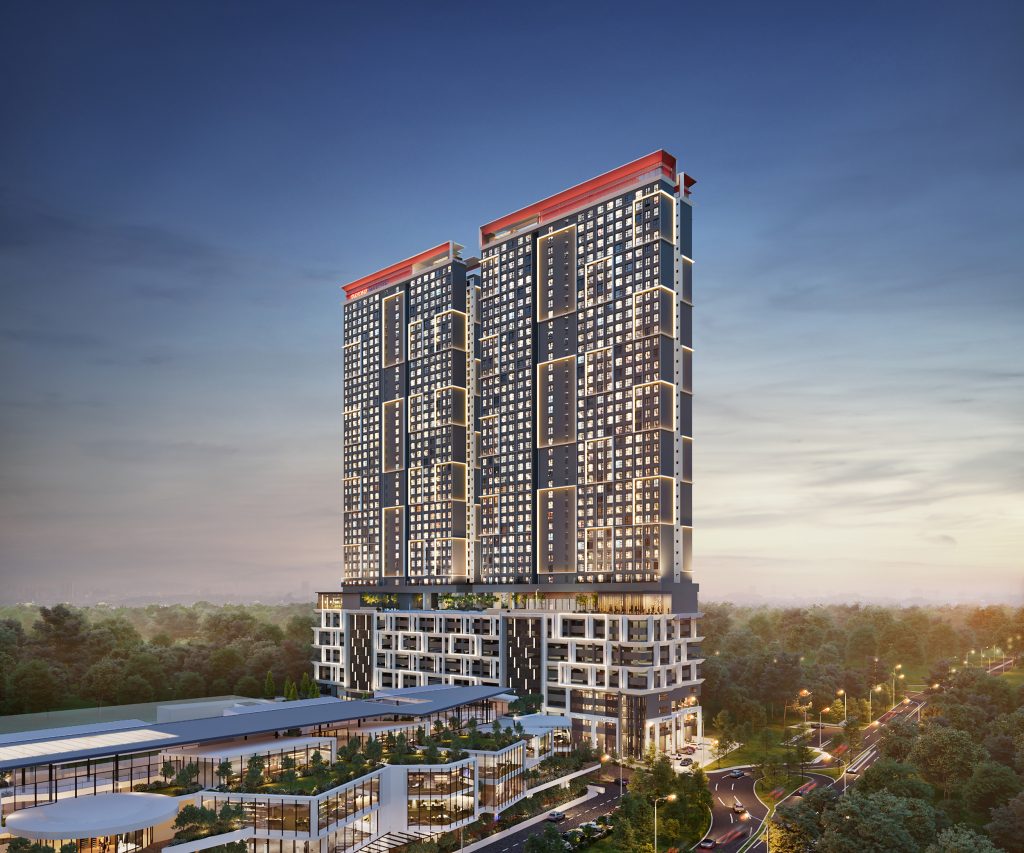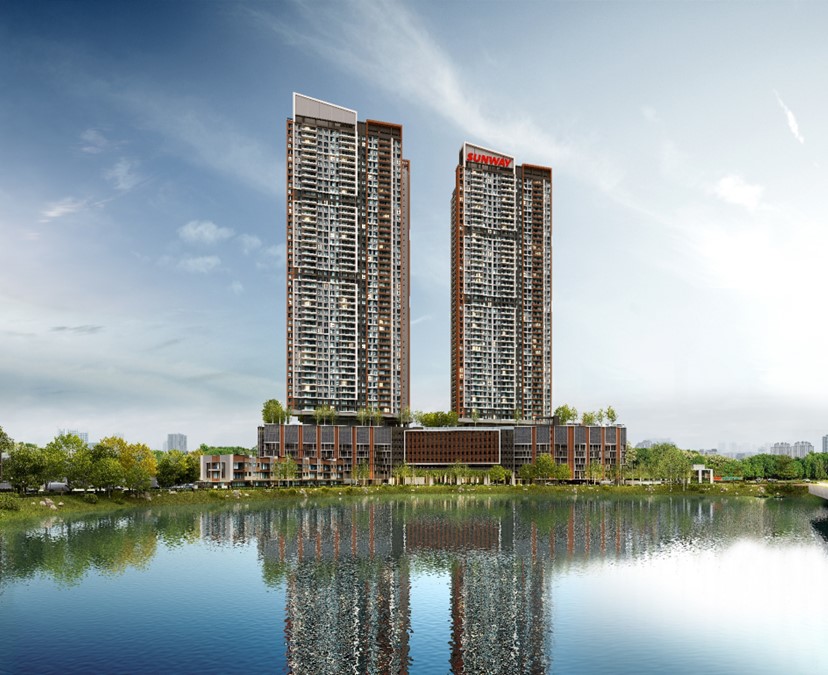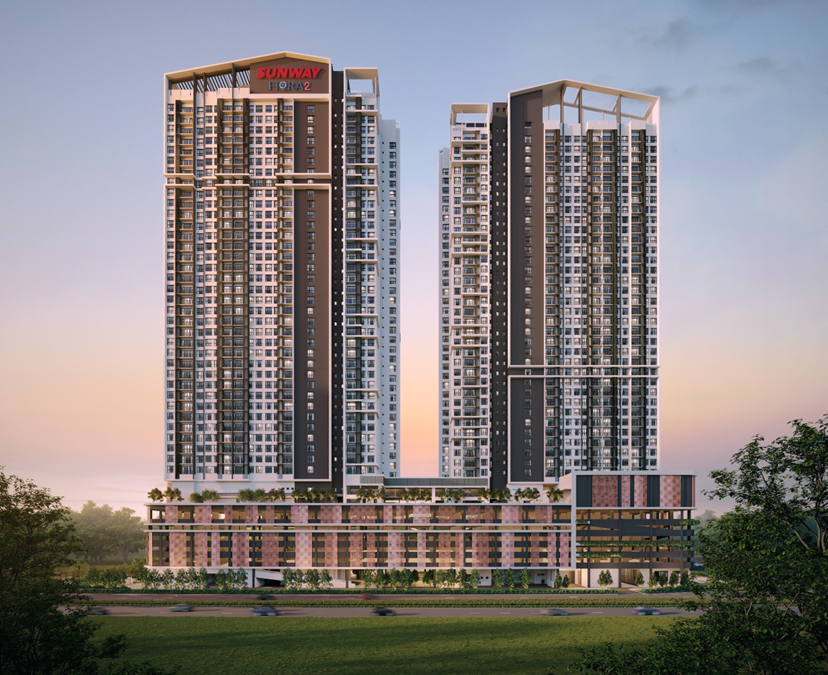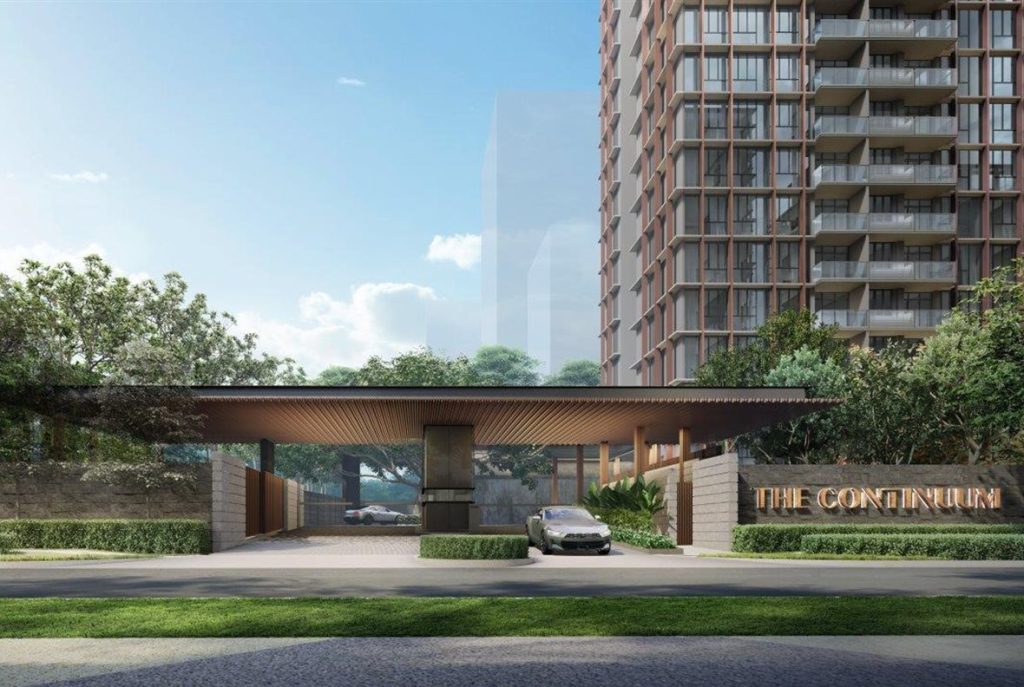WINNER | Sunway City Ipoh | Sunway Bhd – Property Division
Giving back to his hometown was always a goal for Sunway Group founder and chairman Tan Sri Jeffrey Cheah, who is from a small town called Pusing in Perak. When he stumbled upon a former mining site in Ipoh in 1995, Cheah immediately envisioned creating something extraordinary out of the wasteland.
“Our chairman has great experience transforming a former mining town into what Sunway City Kuala Lumpur is today. So in Ipoh, he has managed to replicate the same success with the 1,350-acre Sunway City Ipoh master plan in Tambun,” says Sunway City (Ipoh) Sdn Bhd executive director Wong Wan Wooi.

Developed by Sunway Bhd (KL:SUNWAY) — Property Division (Sunway Property) and established in 1996, Sunway City Ipoh is a township comprising residential, commercial, industrial, educational and hospitality components, surrounded by tropical greenery, the majestic 260-million-year-old limestone hills of Kinta Valley and natural hot springs capable of generating more than one million litres per day at temperatures ranging from 40°C to 70°C.
Sunway Property CEO for central and northen region Chong Sau Min says, “In developing Sunway City Ipoh, our focus has always been on biodiversity conservation and preservation of the environment. The township is another testament to our reputation as a master community developer. Just like what Wong mentioned, we are replicating our success of transforming wastelands into wonderlands.”
In the Ipoh Structure Plan 1998–2020 — drafted to propel the city’s growth — Sunway City Ipoh was identified as a catalyst to spur the Eastern Development Corridor of Ipoh, focusing on tourism, recreation, institutions of higher learning and agro-business.
With a well-designed master plan, nestled within Tambun’s natural terrain, Sunway City Ipoh has been awarded The Edge Malaysia Property Development Excellence Award for Master Plan Excellence at The Edge Malaysia Property Excellence Awards 2024.
How it began
Wong, who has seen the progress of the township since day one, explains that when Sunway first purchased the land in Tambun, a large part of it had already been mined out. Fortunately, the hot springs, jungle and hills remained untouched. Plus, having worked on reviving barren lands in Sunway City Kuala Lumpur, his team already knew what to do with the derelict pit.
Says Wong, “When we first arrived, Tambun was a sleepy hollow. It was a place completely devoid of development, business activities, infrastructure, population and even vehicles. The roads were all narrow and it was very dark at night. The only activities in the area were agriculture, fish farming, livestock farming and pomelo farming. I thought to myself, how are we going to pull this off? But our chairman had a clear vision. As with most township developments, this is a loss-leader venture and requires a lot of perseverance and heavy investment to make it happen.

“The first piece of property we built in the township were 52 units of shophouses. Then we built some industrial lots comprising terraced and semi-detached factories. We chose these projects to be developed first because, when we started, we needed the revenue. But to be frank, when we first started in 1996, we struggled. We were not spared from the financial crisis in 1997, which almost brought Sunway City Ipoh to its knees. Properties were being built and almost abandoned due to the cash crunch.”
With perseverance, Wong explains, is how they managed to turn things around. “We persisted in completing the project, even paying substantial liquidated ascertained damages (LAD) for late delivery. The turning point in restoring confidence in the project was the development of the Lost World of Tambun in 2004, as the government and public were looking for a replica of the famous and very successful Sunway Lagoon theme park in Kuala Lumpur.”
From there, Wong says things started looking up for Sunway City Ipoh as the development of the subsequent phases was carried out smoothly. In total, the master plan consists of eight phases, of which about 75% of the township has been fully developed. The entire master plan has a gross development value (GDV) of over RM5 billion.
Nature at its core
To date, Chong says, Sunway City Ipoh comprises more than 2,000 units of residential, industrial and commercial properties. Some notable projects of the master plan include The Banjaran Hotsprings Retreat, Lost World Hotel, Sunway Medical Centre, Sunway Onsen Suites and Lost World of Tambun. The master plan also boasts its natural elements as all its leisure projects are built among greenery.

Wong goes on to explain that most of these developments were inspired by the lush environment the township was blessed with. “We knew the gifts from Mother Nature would enable us to create iconic projects that would differentiate us from most other developments, not just in Malaysia but around the world. Hence, we conceived the idea of The Banjaran Hotsprings Retreat, which harnesses natural hot spring water for attractions within the resort, such as the steam cave, natural geothermal heated pool, hot spring facilities within the villas and other wellness facilities.
“To ensure the hot spring water can continue to be enjoyed by the public, we channel the hot water to the Lost World of Tambun to create other unique attractions such as the Lost World Hot Springs and Spa and Lost World Hot Springs Night Park, which has become a focal point for visitors with extended opening hours until 11pm every day.”
Some hot water is also being channelled to the common facilities at Sunway Onsen Suites, which is now becoming an increasingly popular Airbnb destination for visitors of the township, he says.
“We also anticipate that in the future, we will continue to harness geothermal water for our expansion plan of The Banjaran Hot Springs Retreat, with another 30 acres of land. Additionally, it will be unique to introduce a senior living residence next to the medical centre, where we also have a source of hot spring water,” Wong adds.
At the Lost World of Tambun, the developer has preserved a 70m natural limestone formation that can be used by rock-climbing hobbyists. With its natural environment, the developer was also able to set up a petting zoo, which now houses giraffes and hippopotamuses.
Some 20 to 30 years ago, the developer found a cave within the limestone hills of Kinta Valley before the theme park was opened in 2004. Widely known as Gua Datuk, this cave houses three chambers and the locals believe it is sacred ground.
“We engaged with geologists to really study the cave and its risk factors. We found that it was safe to explore so our initial team climbed up using ropes as there were no steps. Then, we stumbled upon something extraordinary; the light shining through the cracks on the stalactites and stalagmites onto the cave’s walls creates a northern lights-like neon-green glow.
“[Hence], we named it the Picasso Cave because it reminded us of his artworks. We wanted to share this magnificent site with the public so we built about 600 steps to the cave,” Wong says, adding that the developer followed all guidelines for limestone hills and safety zone provided by the Department of Minerals and Geoscience.
A few years after that, Wong says Cheah had several ideas to bring in more people to experience the cave’s beauty. That is when Jeff’s Cellar, the meditation cave and a sky bar were created in 2004, spanning about 5,000 sq ft.
As part of the developer’s sustainability and environment conservation efforts, it has created waterways for the preservation of ponds to act as silt traps, flood mitigation and habitats for aquatic creatures; introduced organic, pesticide-free farming on some of the undeveloped land instead of leaving it idle and as an eyesore; and extensive landscaping is done in-house.
Additionally, most developments in the township are equipped with rainwater harvesting systems, solar panels on rooftops for renewable energy and the provision of electric vehicle charging stations.
The developer also decided to transform a few undeveloped and empty pieces of land for farming. Today, Sunway City Ipoh has three organic farms, namely the Organic Garden, Herbal Garden and Chef Boon’s Garden. Wong says the harvested organic produce is distributed to grocery stores.

Creating a full-fledged township
Chong says there are about 400 acres of land yet to be developed in Sunway City Ipoh. “Specifically, we have about 100 acres of flat land and about 300 acres of developable land at the hilltop. We estimate that it will take at least another 10 years to complete.”
The developer is now working on the Sunway Ipoh Mall. With a total development cost of over RM1.2 billion, the mall will be developed on an 18.88-acre parcel and will span more than one million sq ft of net lettable area across four storeys. The mall will have 350 retail lots and 3,000 car parking bays.
The mall is expected to be completed in 2027 and will house Perak’s first ice skating rink, an exhibition centre, a 36-lane bowling centre, a multipurpose sports centre, a gourmet garden and a 10-hall cinema with a seating capacity of about 1,500.
“We will also be developing more residential units for sale, hostels, an Ipoh branch of Sunway University and possibly some industrial projects. In October, we completed our RM350 million Sunway Medical Centre Ipoh, which is expected to open by 1Q2025.
“Additionally, we will be launching 168 units of townhouses, known as Sunway Bayu, in November 2024. In the pipeline, we will be building a new hotel above the mall, expected to open by the end of 2027 or early 2028; the second phase of Sunway Onsen with around 600 units; a tower for staff residences; a senior living residence; hilltop homes on about 300 acres of land; and the expansion of the highly successful The Banjaran Hotsprings Retreat on an adjacent 30 acres of land.”
Chong reveals that the entire master plan is expected to be completed by 2035.
Infrastructure needed for population growth
For the township to succeed, Wong says they inevitably had to do much more beyond just developing projects. One key aspect was the road system, which used to be just a narrow, two-lane, meandering road from Ipoh to the township.
“We appealed to and persuaded the government to support and collaborate with us in upgrading the road system leading to our township, particularly where there used to be a huge roundabout next to what is now Hospital Pantai Puteri. The federal government was quick to agree with us and supported us by building a flyover to replace the roundabout.
“The narrow, two-lane winding road was also progressively widened in stages from the Hospital Pantai Puteri area to Sunway City Ipoh and, at the same time, street lights were installed, landscaping was done and ample road signage was put up. From the North-South Expressway (NSE), we proposed to the government to build slip roads directly from the highway to Jalan Tambun, significantly improving connectivity and bringing more traffic to Sunway City Ipoh, Tambun and the whole of Ipoh.”
In March 2024, Wong explains that the developer collaborated with the Ipoh City Council to upgrade a 5.2km stretch of Jalan Tambun from the NSE to the township at a cost of RM16 million. Sunway contributed RM8 million to the upgrade.
“This resulted in the removal of five traffic lights and their replacement with four U-turns, creating a seamless journey from the NSE to the township in just five minutes. We now have a new aspiration to transform the master plan into the biggest rest and recreation area along the NSE, with the completion of the road improvements and the upcoming Sunway Ipoh Mall by the end of 2027.”
Ipoh is well connected to Singapore and Johor Bahru with several flights every day, which also helps to bring many foreign tourists via Changi Airport to Ipoh. The city is also well served by the Electric Train Service system.
Long-term value
According to the Department of Statistics Malaysia, Tambun has a population of 259,166 while Ipoh had 857,225 as of August last year. Wong stresses that although the population of both areas has increased over the years, there seems to be a serious brain drain problem.
“In all relatively smaller cities, people no longer want to stay in places like that. This group of people are usually the working class. There is not much we can do other than create more job opportunities and improve our road networks so that visitors from other cities and states can come in.
“We created many jobs, both directly and indirectly, significantly benefiting the local population. The developments in the township are collectively expected to add thousands of new jobs and generate significant economic and social multiplier effects for the state,” Wong elaborates.
He adds that Sunway has contributed to the state government through developments in the form of quit rent, assessment and land premium. Furthermore, he reveals that the value of most of the properties in the township has appreciated substantially over the years.
On his market outlook for Tambun, Chong says, “We strongly believe that Sunway City Ipoh will evolve to become the largest rest and recreation area along the NSE by 2027, with significant improvements in the road system, our many iconic components and the completion of more exciting projects in the future. We believe this will create a spillover effect to other developments in Tambun and even Ipoh as well.”











